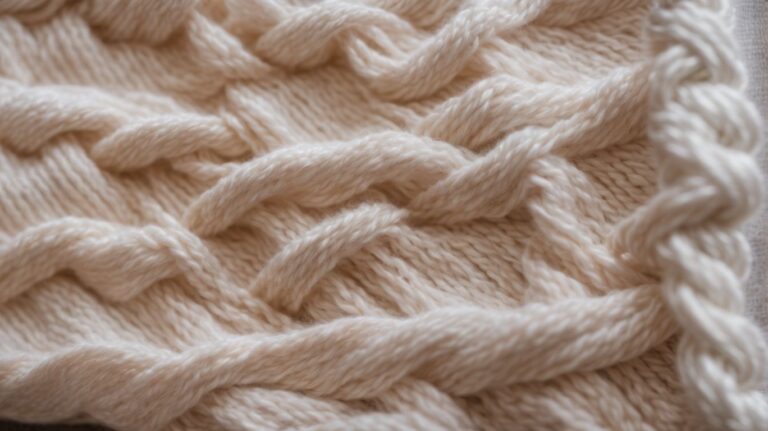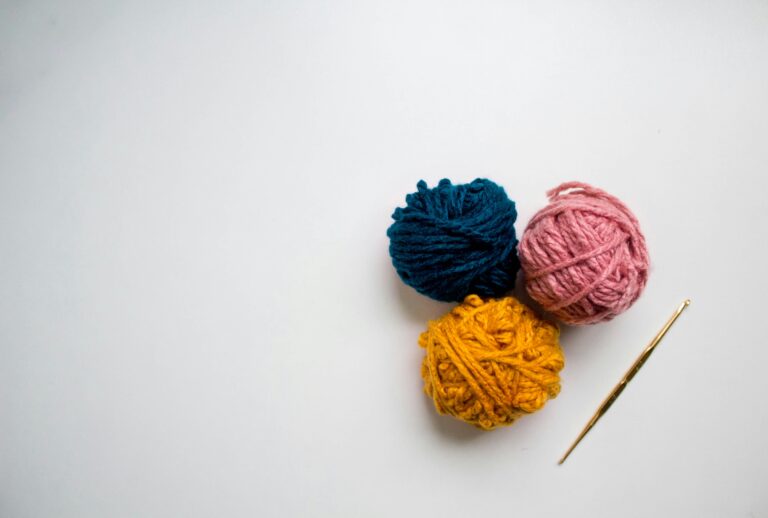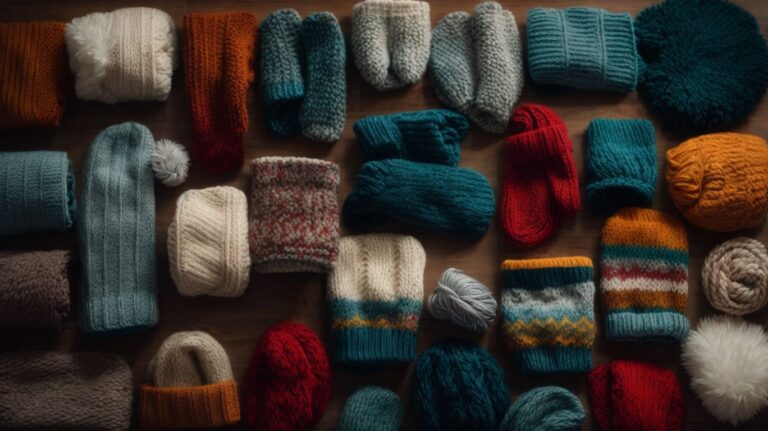Knitting with Onion-Skin-Dyed Wool: A Guide to Emotional Design
Making things that touch people’s hearts is very powerful. Using natural dyes like onion skins can add a unique touch to handmade products, making them even more special.
Dyeing wool with onion skins makes a variety of soft, earthy colors. This method not only makes beautiful colors but also infuses the wool with a sense of history and craftsmanship.
By using onion-skin-dyed wool in knitting, crafters can make truly unique pieces. These pieces can touch others’ hearts deeply.
Key Takeaways
- Crafting with natural dyes like onion skins adds uniqueness to handmade products.
- Onion-skin-dyed wool creates subtle, earthy tones that add depth to knitted items.
- This technique infuses wool with a sense of history and craftsmanship.
- Using onion-skin-dyed wool can create emotionally resonant, one-of-a-kind pieces.
- Emotional design knitting focuses on creating items that connect with others.
Introduction to Onion-Skin-Dyed Wool
Adding onion-skin-dyed wool to your knitting brings natural beauty and emotional depth. This method makes your projects look stunning and connects you to a long-standing tradition of dyeing.
Creating onion-skin-dyed wool mixes old techniques with new ideas. It results in yarn that’s not just beautiful but also holds emotional value. Let’s dive into the world of onion-skin-dyed wool and learn about its technique, history, and emotional impact.
What is Onion-Skin Dyeing?
Onion-skin dyeing uses onion skins to make warm, earthy colors. It’s a natural dyeing method that’s been around for centuries. The process involves boiling onion skins to make a dye bath, which colors wool yarn.
The colors can range from golden yellows to deep oranges and browns. This depends on the onions, the mordant used, and how long the wool is dyed. This makes onion-skin dyeing exciting for crafters wanting unique colors.
- Uses onion skins as a natural dye.
- Makes a variety of earthy tones.
- Colors can vary based on technique and materials.
Historical Context of Natural Dyes
Natural dyes have been around for thousands of years. Different cultures have used local materials to create their own dyeing techniques. Onion skins are popular because they’re easy to find and produce rich colors.
Back then, natural dyes were more than just for coloring. They carried cultural and symbolic meanings. Today, people are drawn to natural dyes for their sustainability and connection to traditional crafts.
- Natural dyes have been used for thousands of years.
- Different cultures have their own dyeing techniques.
- There’s a modern interest in natural dyes for their eco-friendly nature.
Importance of Emotional Design
Emotional design in knitting is about creating items that feel personal and evoke emotions. Onion-skin-dyed wool, with its unique colors and natural origins, is key in this emotional connection.
Using natural materials and traditional dyeing techniques makes each project special. This emotional aspect is what makes handmade, naturally dyed items so appealing.
Benefits of Using Natural Dyes
Using natural dyes in knitting, like onion skins, offers many benefits. It makes your projects sustainable, unique, and emotionally meaningful. Natural dyes also reduce the environmental impact of your work.
Eco-Friendly Considerations
Natural dyes, such as onion skins, are great for the planet. They are biodegradable and don’t pollute water like synthetic dyes do. This makes dyeing with onion skins sustainable and eco-friendly, perfect for those who care about the environment.
Health Benefits of Natural Fibers
Natural fibers dyed with onion skins or other natural materials are healthier. They are less likely to cause skin irritation than synthetic dyes. Plus, they breathe well, wick moisture, and keep you warm, making them great for clothes and home items.
Unique Color Palettes
Dyeing wool with onion skins creates unique and varied color palettes. These colors are hard to get with synthetic dyes. Each batch of yarn is different, allowing you to make truly unique pieces.
| Dyeing Method | Eco-Friendliness | Health Benefits | Color Uniqueness |
|---|---|---|---|
| Onion Skin Dye | High | Yes | High |
| Synthetic Dye | Low | No | Low |
| Plant-Based Dye | High | Yes | Medium |
Choosing natural dyes helps make crafting more sustainable. It also lets you create something unique and special.
The Process of Dyeing Wool with Onion Skins
Dyeing wool with onion skins is a green and creative way to get unique colors. This old method, mixed with new ways, makes sustainable yarn dyeing possible.
Preparing the Wool for Dyeing
First, you need to get the wool ready. Wash it in hot water to remove dirt and oils. This makes sure the dye spreads evenly.
- Soak the wool in warm water with a mild detergent.
- Rinse well to get rid of all soap.
- Press out water without wringing the wool.
Preparing the Onion Skins
The color of the onion skins is key. Use skins that are rich in color and fresh.
- Sort onion skins by color.
- Boil them in water to make a dye bath. Adjust the amount for the right shade.
- Strain the dye bath to remove solids before adding wool.
Dyeing Techniques to Explore
There are many ways to dye wool with onion skins. Trying different methods can lead to many colors and textures.
- Over-dyeing: Use different natural dyes, like onion skins, to get complex colors.
- Shibori: Fold or twist wool before dyeing for unique patterns.
- Gradient dyeing: Change the dye bath’s intensity for a gradient effect.
Learning these techniques lets crafters make special, green textiles. These show their creativity and care for the planet.
Emotional Connection in Crafting
Knitting with onion-skin-dyed wool is more than just making something. It creates a deep bond between the maker and the wearer. This bond comes from the colors, textures, and the meaning behind the craft.
Using natural materials and dyes in crafting lets people express themselves deeply. Onion-skin-dyed wool adds a special emotional touch. This is because of its natural beauty and the unique colors it produces.
How Colors Affect Emotions
Colors greatly impact our feelings, as studies have shown. The colors from onion skin dyeing can make us feel certain ways. For example, the warm colors can make us feel cozy and safe.
Research also says colors can change our mood and energy. In knitting, picking the right color can make us feel closer to our creations. For more on how colors affect us, check out this resource.
Personalization in Knitting Projects
Personal touch is key in emotional design knitting. By picking colors, patterns, and yarn, crafters make their projects special. Onion-skin-dyed wool makes each skein unique, with its own colors.
This personal touch strengthens our bond with the finished item. It turns each piece into a part of the crafter’s personality. So, handmade emotional design products are more than just things; they show the crafter’s inner self.
Project Ideas for Onion-Skin-Dyed Wool
Exploring onion-skin-dyed wool crafts can lead to amazing handmade emotional design products. The unique colors from onion skin dyeing open up many creative paths for knitters and crafters.
Scarves and Shawls
Scarves and shawls are a favorite for onion-skin-dyed wool. They’re not just warm; they’re also a fashion statement with their earthy tones. Each piece, dyed naturally, becomes a personal accessory.

Home Decor: Pillows and Throws
Onion-skin-dyed wool is great for home decor like pillows and throws. These items bring warmth and coziness to any space. They also show off the beauty of natural dyes, fitting many design styles.
Accessories: Hats and Gloves
Onion-skin-dyed wool is also perfect for making hats and gloves. These items are not just warm; they’re also thoughtful gifts. The unique colors make each piece special.
Here’s a comparison of different project ideas using onion-skin-dyed wool:
| Project | Skill Level | Time Required |
|---|---|---|
| Scarf | Intermediate | 5-7 hours |
| Pillow Cover | Advanced | 10-12 hours |
| Hat | Beginner | 3-5 hours |
These ideas show how versatile onion-skin-dyed wool is. It can make a wide range of beautiful, meaningful items. Whether you’re experienced or new to knitting, natural yarns can enrich your projects.
Techniques for Knitting with Dyed Wool
To get the most out of onion-skin-dyed wool in knitting, pick the right patterns and take good care of the yarn. The colors from natural dyeing open up many creative paths.
Pattern Selection
Choosing the right pattern is key when using onion-skin-dyed wool. The colors blend in a way that adds depth to certain patterns. For example, textured stitches or subtle cables make a project stand out.
For more detailed projects, like clothes, pick a pattern that matches the yarn’s unique colors. Crafters find that the dyeing process is as calming as knitting itself. This shows the emotional journey starts before you even begin knitting.
| Pattern Type | Suitability for Onion-Skin-Dyed Wool | Tips for Use |
|---|---|---|
| Simple Scarves/Shawls | High | Showcases the yarn’s color variation |
| Textured Stitches | Medium to High | Adds depth and visual interest |
| Complex Garments | Medium | Choose patterns that don’t compete with the yarn’s color |
Handling Yarn with Care
It’s important to handle onion-skin-dyed yarn carefully to keep its color and quality. Store it in a cool, dry spot, away from sunlight. Also, use gentle washing for finished items. How well you care for the yarn affects its life and your finished piece.
By picking the right patterns and caring for the yarn, you can make unique, emotionally meaningful items. Working with onion-skin-dyed wool is more than making something pretty. It’s about creating a special experience.
Maintenance of Onion-Skin-Dyed Products
To keep your onion-skin-dyed wool creations looking great, you need to take good care of them. This means using eco-friendly knitting techniques not just when you make them, but also when you take care of them later.
First, understand that naturally dyed wool is delicate. Onion-skin-dyed wool needs gentle care to keep its color and texture just right.
Washing and Care Instructions
When washing your onion-skin-dyed wool, use cold water and a mild detergent. Here’s how to do it right:
- Gently hand wash the item in cold water.
- Use a mild, eco-friendly detergent.
- Avoid wringing or twisting the item; instead, gently squeeze out excess water.
- Reshape the item and lay it flat to dry, away from direct sunlight.
Storing Your Creations
Storing your items properly is just as important as washing them. Here are some tips to keep your onion-skin-dyed wool products in top shape:
- Store items in a cool, dry place.
- Avoid folding or creasing the items; instead, roll them to prevent creases.
- Use breathable storage bags or cloth to keep items fresh.
By following these simple care and storage tips, you can enjoy your onion-skin-dyed wool creations for many years. You’ll also be supporting sustainable yarn dyeing practices.
Community and Collaboration in Knitting
Knitting brings people together, creating a sense of community. It makes crafting more enjoyable and deepens our connection to our handmade items.
Joining local knitting groups is a great way to meet others. These groups let you share projects, get tips, and learn from each other. You can find them at local yarn stores, community centers, and libraries.
Joining Local Knitting Groups
Being part of a local group has many benefits. You can take part in workshops, get feedback on your work, and be inspired by others. Many groups also work on charity projects, adding a special meaning to the hobby.
To find a local group, try these resources:
- Local yarn stores
- Community centers
- Libraries
- Online directories like Meetup.com
- Social media platforms
Participating in Online Forums
Online forums are also great for knitters. They offer a wide range of patterns, tips, and advice from all over the world.
Some top online platforms for knitters are:
| Platform | Description | Benefits |
|---|---|---|
| Ravelry | A comprehensive community for knitters and crocheters | Pattern sharing, project tracking, and forums |
| Knitting Help | A website offering video tutorials and tips | Improves skills, troubleshooting |
| Reddit’s r/knitting | A community-driven forum on Reddit | Discussion, pattern sharing, and advice |
By joining both local and online communities, you can make your knitting journey better. You’ll improve your skills and feel more connected to your handmade items. This is what emotional design knitting and handmade emotional design products are all about.
Sustainable Practices in Knitting
Knitting can help reduce our environmental impact. It’s key to use eco-friendly knitting techniques. These methods are good for the planet and make crafting more enjoyable.
Choosing the right materials is crucial. Look for yarns made with green methods. For example, yarn from sustainable yarn dyeing is better. A study shows natural dyeing, like using onion skins, cuts down yarn production’s environmental harm as highlighted in recent research.
Sourcing Sustainable Wool
When picking wool, animal welfare and green farming are important. Some farms use regenerative agriculture. This boosts soil health and biodiversity.
- Choose wool from local farms or those that practice regenerative agriculture.
- Opt for yarns that are certified by organizations promoting sustainable agriculture.
- Consider the carbon footprint of transporting your yarn and try to source locally.
Reducing Waste in Your Crafting
Reducing waste is vital in knitting. Here are ways to cut down on waste:
- Plan your projects well to avoid leftover yarn.
- Use scraps for smaller projects or donate them to schools and community centers.
- Turn old or worn-out items into new creations.
By using eco-friendly knitting techniques and choosing materials wisely, we can enjoy knitting. This way, we help create a greener future. As more knitters adopt sustainable practices, our craft will become more eco-friendly.
Conclusion: Embracing Creativity with Onion-Skin-Dyed Wool
Knitting with onion-skin-dyed wool lets you dive into a world of creativity. It’s a chance to make emotional design products that stand out. These products are unique and touch the hearts of those who see them.
Key Takeaways
Exploring onion-skin-dyed wool shows the value of sustainable crafting. It also highlights the special bond created through personalized knitting. Plus, it introduces the exciting world of natural dyes.
A study by Deepali Singhee, Yamini Dhanania, and A K Samanta shows the power of vegetable dyes. It encourages you to keep trying new things.
Experimenting with Onion-Skin-Dyed Wool
When you start knitting with onion-skin-dyed wool, try different patterns and techniques. This will help you bring out the best in these special yarns. For more ideas, check out vegetable dye research. It can spark new ideas and help you learn more about natural dyeing.







